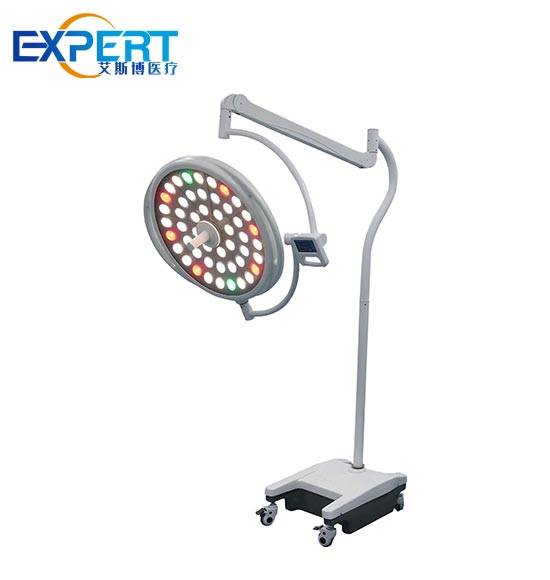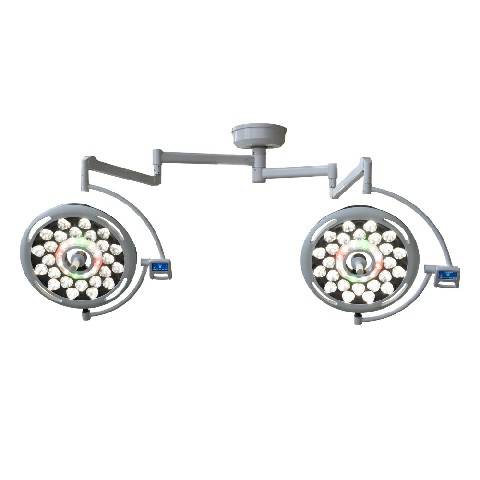عنوان
304 شارع الكاردينال الشمالي
مركز دورتشستر ، ماساتشوستس 02124
ساعات العمل
من الاثنين إلى الجمعة: 7 صباحًا - 7 مساءً
عطلة نهاية الأسبوع: 10 صباحًا - 5 مساءً
عنوان
304 شارع الكاردينال الشمالي
مركز دورتشستر ، ماساتشوستس 02124
ساعات العمل
من الاثنين إلى الجمعة: 7 صباحًا - 7 مساءً
عطلة نهاية الأسبوع: 10 صباحًا - 5 مساءً

Selecting the right operating light for your medical facility is crucial for ensuring optimal surgical outcomes.
Selecting the right operating light for your medical facility is crucial for ensuring optimal surgical outcomes. The right operating light can significantly impact the visibility and accuracy of surgical procedures, ultimately enhancing patient safety and the efficiency of the surgical team. This blog will guide you through the essential factors to consider when choosing an operating light, the different types available, and how to maintain and optimize these critical pieces of medical equipment.

Operating lights, also known as surgical lights, are specially designed to provide high-intensity, shadow-free illumination during surgical procedures. The right operating light improves visibility, reduces eye strain for surgeons, and enhances the overall quality of the operation.
To choose the best operating light, it’s important to understand the key features that contribute to its effectiveness:
There are various types of operating lights available, each with its own set of advantages and considerations. Understanding these types will help you make an informed decision.
LED (Light Emitting Diode) operating lights are popular due to their energy efficiency, long lifespan, and superior light quality. They provide bright, consistent illumination with minimal heat output.
Halogen operating lights have been a standard in many medical facilities for years. They offer bright illumination but tend to produce more heat compared to LED lights.
Xenon operating lights are known for their intense, white light that closely mimics natural daylight. However, they can be more expensive and have a shorter lifespan than LED lights.
Portable operating lights are versatile and can be moved easily between different surgical rooms or even taken off-site for field operations. They are essential for facilities that require flexibility.









Selecting the best operating light involves evaluating several critical factors to ensure it meets the specific needs of your medical facility.
The primary function of an operating light is to provide adequate illumination. The light should be bright enough to illuminate the surgical area without causing glare or excessive shadows.
CRI is a measure of how accurately the light reveals the true colors of objects. A higher CRI is preferred for operating lights to ensure accurate differentiation of tissues during surgery.
Uniformity of the light beam is crucial to avoid shadows and ensure even illumination. High-quality operating lights maintain consistent light intensity across the entire surgical field.
Considering the frequency and duration of use, the durability and lifespan of the operating light are important. LED lights typically offer longer lifespans and lower maintenance compared to halogen or xenon lights.
Operating lights should be easy to clean and maintain. Look for designs that minimize crevices and are made from materials resistant to disinfectants and cleaning agents.
The operating light should be easily adjustable to different positions and angles, providing the surgical team with flexibility. Ergonomic designs help in easy maneuvering and positioning during surgeries.
| ميزة | LED Operating Lights | Halogen Operating Lights | Xenon Operating Lights | Portable Operating Lights |
|---|---|---|---|---|
| Illumination Intensity | عالي | واسطة | عالية جداً | Variable |
| إنتاج الحرارة | قليل | عالي | واسطة | Variable |
| عمر | 40,000+ hours | 2,000-5,000 hours | 1000-2000 ساعة | Variable |
| كفاءة الطاقة | عالي | قليل | واسطة | Variable |
| CRI | عالي (90+) | Medium (80-90) | Very High (95+) | Variable |
| يكلف | High Initial Cost | Low Initial Cost | High Initial Cost | Variable |
| Maintenance Requirement | قليل | عالي | واسطة | Variable |
Proper installation and setup are crucial to ensure the optimal performance of operating lights. Here are some key considerations:
The installation process should be handled by professionals to ensure proper mounting and electrical connections. Incorrect installation can lead to poor performance and potential safety hazards.
Operating lights should be positioned to provide maximum coverage of the surgical area. Adjustable arms and swivels help in fine-tuning the light’s position as per the surgeon’s requirements.
Ensure that the electrical setup meets all safety standards and regulations. This includes proper grounding, voltage compatibility, and protection against power surges.

Regular maintenance and care are essential to extend the lifespan of operating lights and ensure they function correctly.
Regular cleaning with appropriate disinfectants prevents contamination and maintains the light’s efficiency. Follow the manufacturer’s guidelines for cleaning procedures.
For halogen and xenon lights, periodic bulb replacement is necessary. Keep a schedule for regular inspections and replace bulbs before they burn out.
Annual professional servicing can help detect and fix potential issues before they become significant problems. This includes checking the electrical components and mechanical adjustments.
Choosing the best ضوء التشغيل for your medical facility is a critical decision that impacts surgical outcomes and patient safety. By understanding the different types of operating lights and considering key factors like illumination intensity, CRI, durability, and ease of maintenance, you can make an informed choice that meets your facility’s specific needs. Proper installation and regular maintenance further ensure that your operating lights perform optimally, supporting the surgical team’s efforts in providing excellent patient care.
LED operating lights are generally considered the best for general surgery due to their high illumination, energy efficiency, and long lifespan.
Operating lights should be serviced annually by professionals to ensure they are functioning correctly and to extend their lifespan.
Yes, operating lights can be used for various medical procedures that require high-intensity, shadow-free illumination, such as dental surgeries and examinations.
When positioning an operating light, consider the surgical area’s coverage, the flexibility of the light’s arm, and the need for shadow-free illumination.
A higher CRI allows for more accurate differentiation of tissues, which is crucial during surgical procedures to avoid mistakes and ensure optimal outcomes.